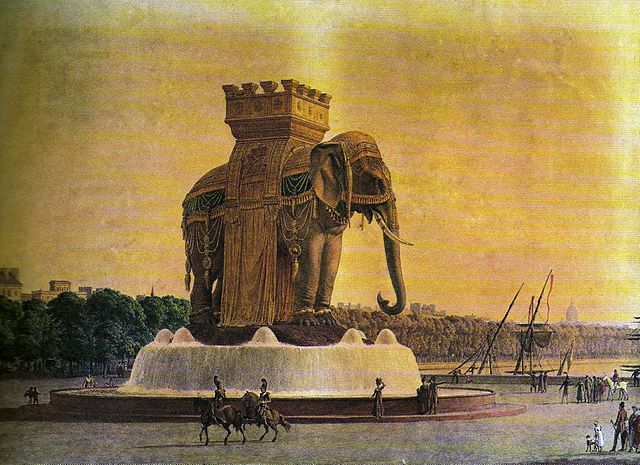Lucy the Elephant is a six-story elephant-shaped example of novelty architecture, constructed of wood and clad in tin in 1882 by James V. Lafferty in Margate City, New Jersey, approximately five miles (8 km) south of Atlantic City. Originally named Elephant Bazaar, Lucy was built to promote real estate sales and attract tourists. Today, Lucy is the oldest surviving roadside tourist attraction in America.
Lucy in 2019
U.S. patent 268,503
HABS image from around 1976
A view of Lucy's interior
Novelty architecture, also called programmatic architecture or mimetic architecture, is a type of architecture in which buildings and other structures are given unusual shapes for purposes such as advertising or to copy other famous buildings without any intention of being authentic. Their size and novelty means that they often serve as landmarks. They are distinct from architectural follies, in that novelty architecture is essentially usable buildings in eccentric form whereas follies are non-usable, purely ornamental buildings also often in eccentric form.
Elephant of the Bastille, 1813–1846 Paris
Engraving of design for the head of the Statue of Liberty (1879) in the Champ de Mars, Paris, including diagram showing plans for human access
Teapot Dome Service Station in Zillah, Washington
The Longaberger Company headquarters in Newark, Ohio








